


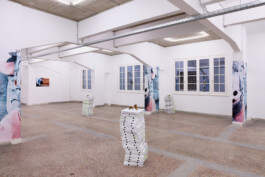
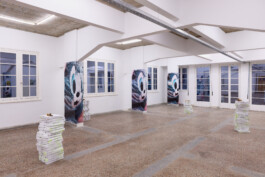

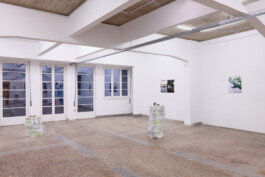
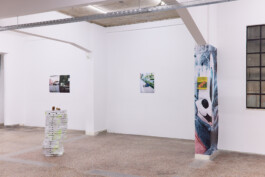


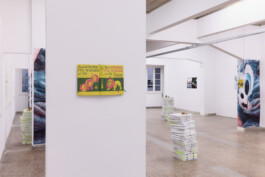

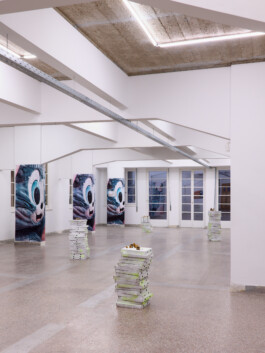
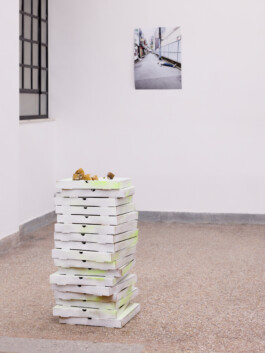



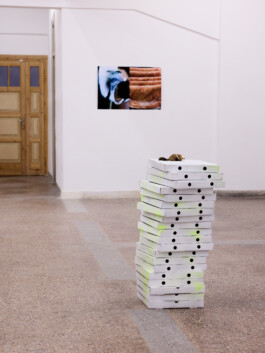

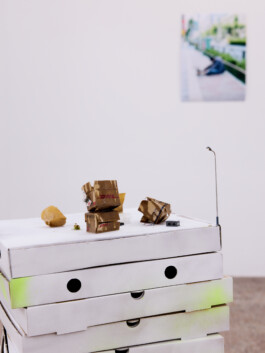
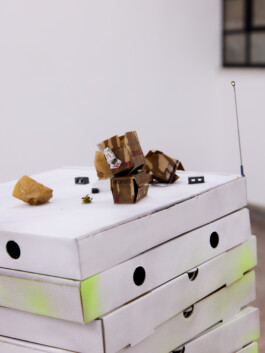
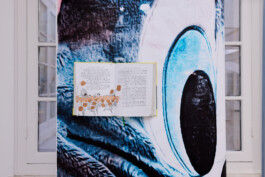
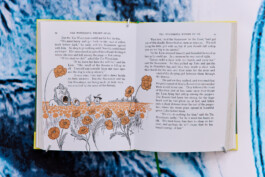

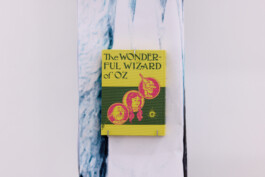
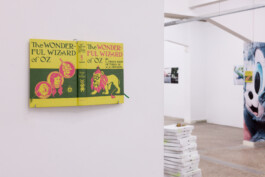
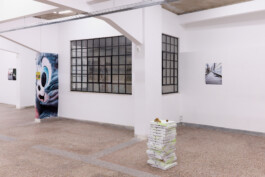
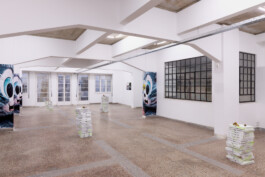
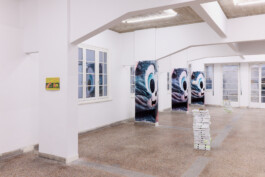
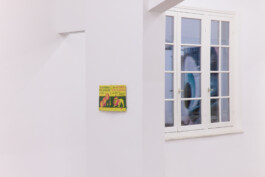
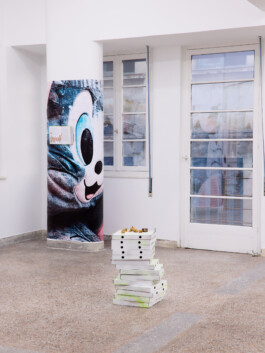
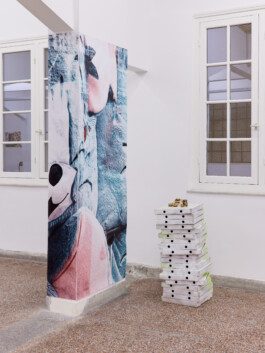
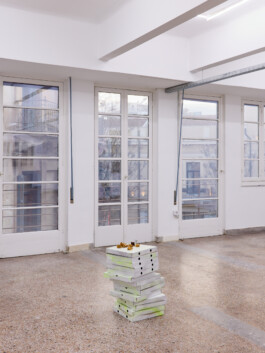
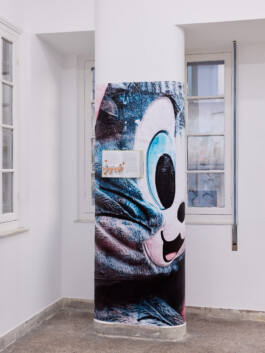
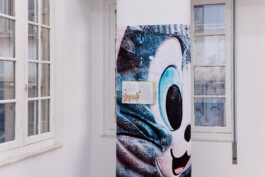
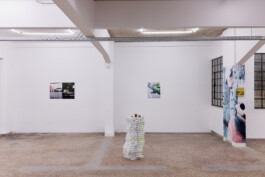
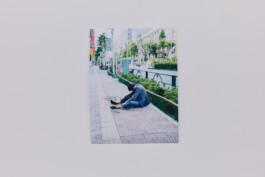
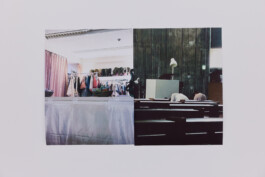


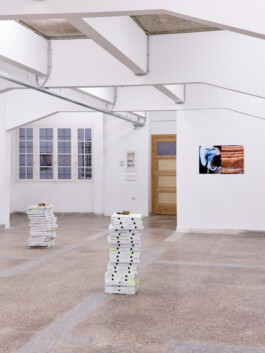
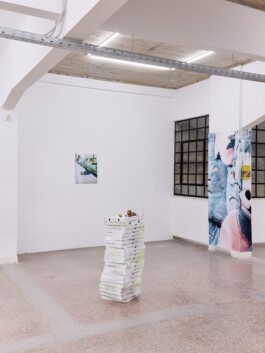

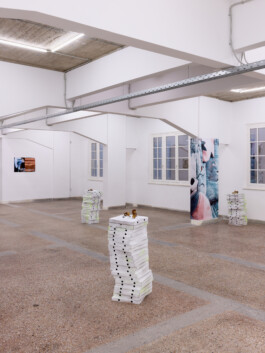
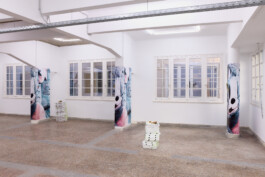

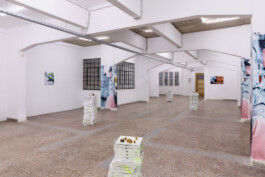
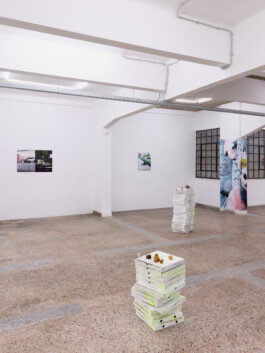

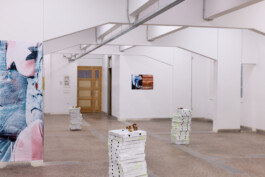
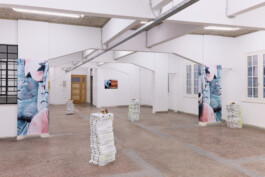
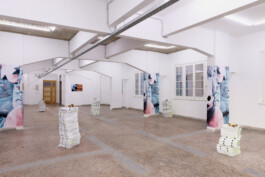
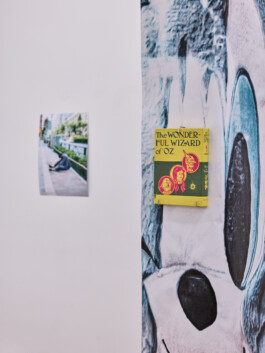

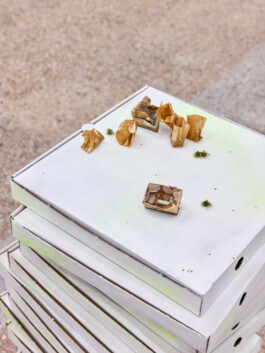
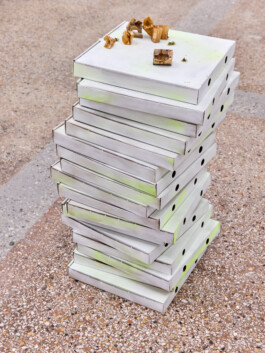
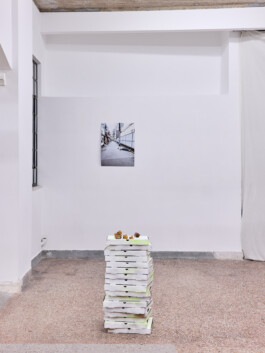

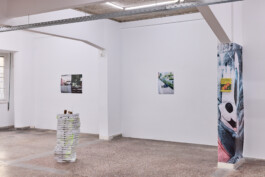

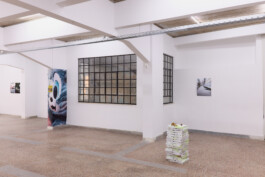
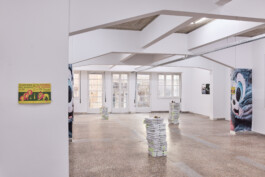

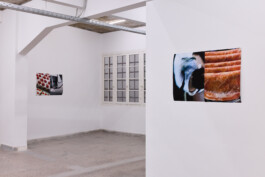


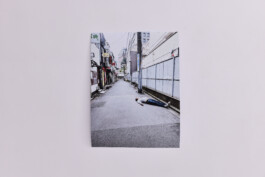





Slumber Poppies
Emilie Pitoiset
MAY 9 - JUNE 13, 2025
The Slumber Poppies exhibition takes us on an ambiguous journey, much like Dorothy being swept away by the tornado in The Wizard of Oz. From the moment we enter, a shift occurs: the viewer leaves the familiar world behind to step into a strange landscape, where sleeping bodies scatter in the margins of the city, and where color-saturated objects evoke a daydream, almost too sweet to be true. Like Dorothy, the path appears to be clearly marked at first, then gradually becomes blurred: rational landmarks dissolve into an atmosphere of toxic enchantment.
At the heart of the project: a photographic stalk undertaken in 2023, in which Pitoiset follows salarymen in their after-work rituals. Bars, game rooms, restaurants, places of forgetfulness - their nocturnal paths sketch a map of social exhaustion. Their bodies, captured at dawn in a harsh light, lie on the ground, still dressed in their suits, as if frozen in a role they never chose. These figures of exhausted obedience resonate with those of the 1930s dance marathoners - bodies worn to the point of vertigo, breathless, a recurring motif in Pitoiset's work. Sleepwalkers, absentees, dissociates, ghosts or empty figures wander and resist in the corridors of Pitoiset's work, who has spent years exploring this iconography.
In this same series, a sugary aesthetic inhabits the images of Inemuri: close-ups of food that seems to lick the face, stuffed animals with voyeuristic eyes. Another figure, discreet yet omnipresent, emerges on the margins of the exhibition: that of the delivery workers, ghosts of contemporary cities. Through a shift in scale, Pitoiset summons them through packaging adorned with miniatures - toys made from waste, traces of a hurried passage. Silent evidence of a race without a finish line, they form an archaeology of contemporary fatigue just as ritualised, just as silent.
The exhibition acts like a field of poppies: seductive and insidiously narcotic. Like in the iconic scene from The Wizard of Oz, where Dorothy collapses into an artificial sleep in the heart of an enchanting landscape, here too, seduction precedes awakening. Colors, objects, and gestures follow the path of a dream before the illusion dissipates. The world tilts in Pitoiset’s work, and our very desire to wake up remains uncertain.
All images from Japan are with the support of the Fondation des Artistes
Émilie Pitoiset (1980, lives and works in Paris) explores, through installations, sculptures, videos, and choreographies, tragicomic scenarios nourished by collective fantasies and libidinal economy. Her work is inhabited by wandering, somnambulistic, ghostly, or faltering figures - troubled presences that question our relationship to performance and the injunction to productivity. She seeks to capture that fragile instant - sometimes tinged with a perverse undertone - when everything shifts: that uncertain threshold between balance and collapse, where the individual drifts between resistance and surrender.
Her work has been widely exhibited in institutions such as the Centre Pompidou, the Centre National de la Danse, the Palais de Tokyo, the Schirn Kunsthalle in Frankfurt, Tai Kwun Contemporary in Hong Kong, the Museo Marino Marini in Florence, the Calouste Gulbenkian Foundation, Bozar in Brussels.
Her work is included in numerous public and private collections, among them the Centre Pompidou, the Centre National des Arts Plastiques, several French Regional Contemporary Art Funds (FRACs), as well as the Pinakothek der Moderne in Munich, the DZ Bank Collection in Frankfurt, the Philara Collection in Düsseldorf, and the AVN Collection in Austria.





































































Slumber Poppies
Emilie Pitoiset
MAY 9 - JUNE 13, 2025
The Slumber Poppies exhibition takes us on an ambiguous journey, much like Dorothy being swept away by the tornado in The Wizard of Oz. From the moment we enter, a shift occurs: the viewer leaves the familiar world behind to step into a strange landscape, where sleeping bodies scatter in the margins of the city, and where color-saturated objects evoke a daydream, almost too sweet to be true. Like Dorothy, the path appears to be clearly marked at first, then gradually becomes blurred: rational landmarks dissolve into an atmosphere of toxic enchantment.
At the heart of the project: a photographic stalk undertaken in 2023, in which Pitoiset follows salarymen in their after-work rituals. Bars, game rooms, restaurants, places of forgetfulness - their nocturnal paths sketch a map of social exhaustion. Their bodies, captured at dawn in a harsh light, lie on the ground, still dressed in their suits, as if frozen in a role they never chose. These figures of exhausted obedience resonate with those of the 1930s dance marathoners - bodies worn to the point of vertigo, breathless, a recurring motif in Pitoiset's work. Sleepwalkers, absentees, dissociates, ghosts or empty figures wander and resist in the corridors of Pitoiset's work, who has spent years exploring this iconography.
In this same series, a sugary aesthetic inhabits the images of Inemuri: close-ups of food that seems to lick the face, stuffed animals with voyeuristic eyes. Another figure, discreet yet omnipresent, emerges on the margins of the exhibition: that of the delivery workers, ghosts of contemporary cities. Through a shift in scale, Pitoiset summons them through packaging adorned with miniatures - toys made from waste, traces of a hurried passage. Silent evidence of a race without a finish line, they form an archaeology of contemporary fatigue just as ritualised, just as silent.
The exhibition acts like a field of poppies: seductive and insidiously narcotic. Like in the iconic scene from The Wizard of Oz, where Dorothy collapses into an artificial sleep in the heart of an enchanting landscape, here too, seduction precedes awakening. Colors, objects, and gestures follow the path of a dream before the illusion dissipates. The world tilts in Pitoiset’s work, and our very desire to wake up remains uncertain.
All images from Japan are with the support of the Fondation des Artistes
Émilie Pitoiset (1980, lives and works in Paris) explores, through installations, sculptures, videos, and choreographies, tragicomic scenarios nourished by collective fantasies and libidinal economy. Her work is inhabited by wandering, somnambulistic, ghostly, or faltering figures - troubled presences that question our relationship to performance and the injunction to productivity. She seeks to capture that fragile instant - sometimes tinged with a perverse undertone - when everything shifts: that uncertain threshold between balance and collapse, where the individual drifts between resistance and surrender.
Her work has been widely exhibited in institutions such as the Centre Pompidou, the Centre National de la Danse, the Palais de Tokyo, the Schirn Kunsthalle in Frankfurt, Tai Kwun Contemporary in Hong Kong, the Museo Marino Marini in Florence, the Calouste Gulbenkian Foundation, Bozar in Brussels.
Her work is included in numerous public and private collections, among them the Centre Pompidou, the Centre National des Arts Plastiques, several French Regional Contemporary Art Funds (FRACs), as well as the Pinakothek der Moderne in Munich, the DZ Bank Collection in Frankfurt, the Philara Collection in Düsseldorf, and the AVN Collection in Austria.
